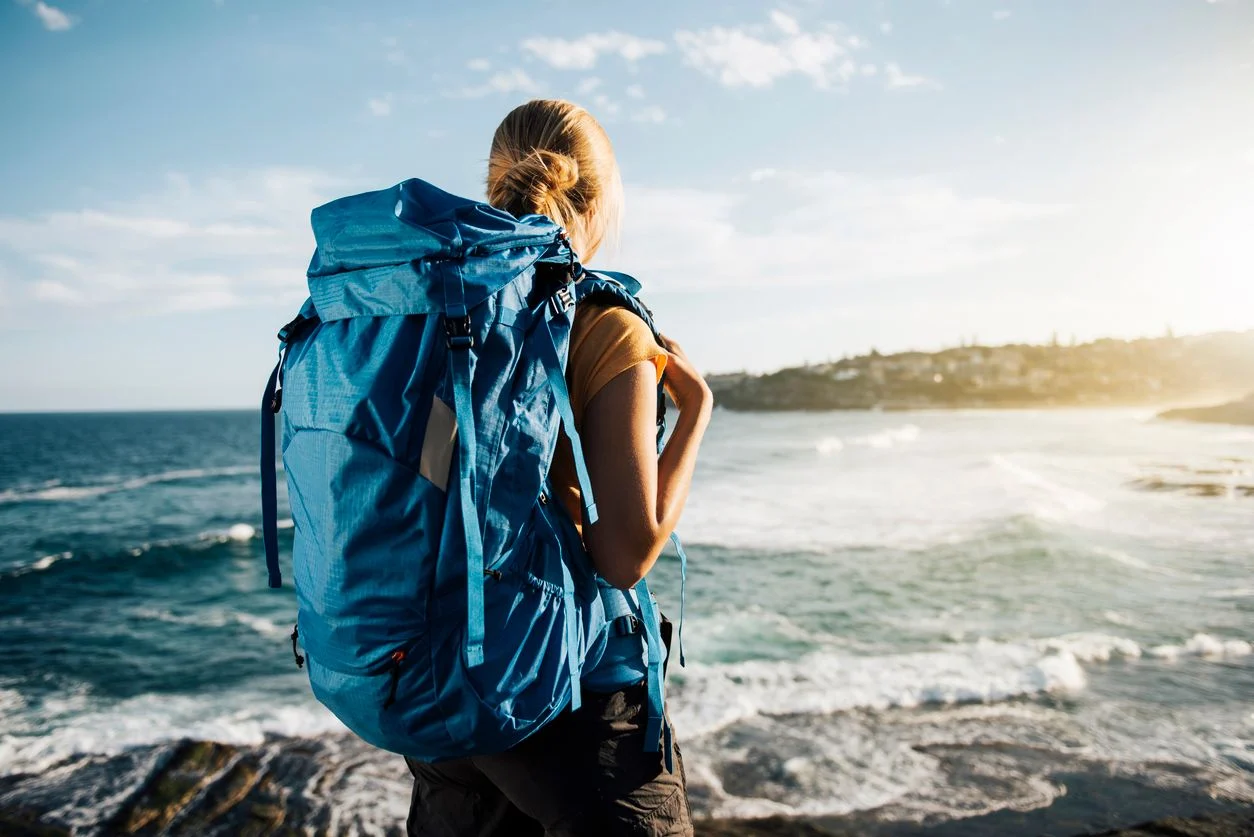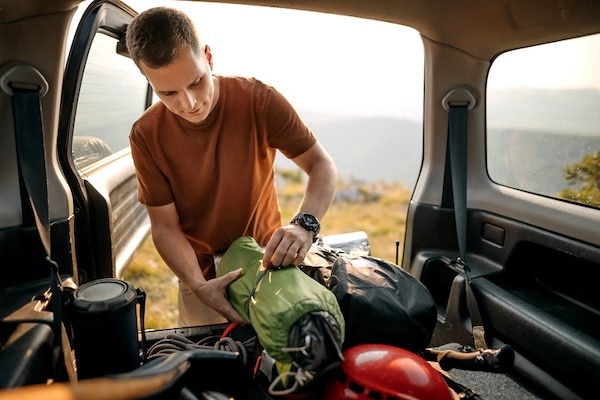Efficient packing transforms your adventure experience from stressful preparation to seamless exploration. Whether you're preparing for a weekend hiking trip, multi-week expedition, or international travel, mastering strategic packing techniques ensures you have everything needed while maintaining manageable weight and organized accessibility.
The art of smart packing goes beyond simply fitting items into your bag – it's about creating systems that enhance your adventure experience through thoughtful organization, weight distribution, and accessibility planning. These proven strategies will revolutionize how you approach packing for any adventure.
Foundation Principles of Smart Packing
Successful packing begins with understanding core principles that apply regardless of your adventure type or duration:
Weight Distribution: Place heavy items close to your back and centered between your shoulder blades when using a backpack. This positioning maintains your natural center of gravity and reduces strain on your spine and shoulders.
Accessibility Hierarchy: Pack items based on how frequently you'll need them. Emergency gear stays accessible but protected, while camp items can be buried deeper in your pack since they're only needed at destinations.
Compression Efficiency: Utilize every cubic inch of space through strategic layering, compression sacks, and filling hollow items with smaller gear. Dead space represents wasted carrying capacity.
The 80% Rule
Never pack to 100% capacity. Leaving 20% space allows for gear expansion, souvenir acquisition, and easier packing/unpacking. This buffer also prevents zipper stress and fabric strain that can lead to equipment failure.
Advanced Organization Systems
Systematic organization prevents the frustration of digging through entire packs to find essential items:
Color-Coded Packing Cubes: Assign specific colors to different item categories – red for first aid, blue for electronics, green for clothing. This visual system enables instant identification even in low-light conditions.
Layered Access Strategy: Pack in reverse order of need. Items needed first go on top or in most accessible compartments, while base camp gear can be packed at the bottom or center of your load.
Modular Packing: Group related items together in dedicated pouches or stuff sacks. Keep your entire cooking system in one container, electronics in another, and personal care items grouped separately.
Rolling vs. Folding
Roll soft items like clothes and sleeping bags to minimize volume. Fold structured items like rain gear to prevent creasing and maintain functionality.
Stuff Sack Strategy
Use compression stuff sacks for sleeping bags and clothing. Clear dry bags for items you need to see quickly. Mesh bags for dirty laundry or wet gear.
Emergency Access
Keep emergency items in consistent, easily accessible locations. Your headlamp, first aid, and emergency shelter should always be in the same pockets.
Weight Balance
Distribute weight evenly between left and right sides. Heavy items should sit close to your spine, with lighter gear filling outer compartments.
Space-Saving Techniques
Maximizing space efficiency allows you to carry more essential gear or reduce overall pack weight:
Nested Packing: Store items inside other items whenever possible. Pack socks inside shoes, stuff your down jacket into its own hood, and store camp utensils inside cookpots.
Multi-Use Items: Choose gear that serves multiple purposes. A trekking pole that converts to a tent pole, a smartphone that replaces camera and GPS, or a buff that functions as hat, bandana, and face protection.
Compression Techniques: Use compression straps, vacuum bags for clothing, and strategic packing order to minimize volume. Squeeze air from sleeping bags and clothing before securing in compression sacks.
Activity-Specific Packing Strategies
Different adventures require adapted packing approaches based on specific needs and constraints:
Day Hiking: Prioritize weight savings and quick access. Pack water and snacks in external pockets, keep rain gear easily accessible, and organize first aid supplies in a quick-access location.
Multi-Day Backpacking: Focus on weight distribution and camp organization. Pack camp items (sleeping system, cooking gear) at the bottom, daily-use items in the middle, and emergency/weather gear on top.
International Travel: Emphasize security and organization. Use lockable zippers, pack valuables in hidden compartments, and organize items for easy airport security screening.
Essential Packing Items for Organization
- Packing cubes (various sizes)
- Compression stuff sacks
- Dry bags (clear and opaque)
- Mesh organizer pouches
- Elastic cords and carabiners
- Waterproof phone case
- Duct tape wrapped on trekking poles
- Ziploc bags (various sizes)
- Rubber bands and cable ties
- Small notebook and pen
Strategic Weight Management
Effective weight management involves both gear selection and packing strategy:
Essential vs. Luxury: Honestly evaluate each item's necessity. Bring duplicates only for critical safety items. Question every luxury item – can you live without it for the adventure duration?
Shared Gear Strategy: When traveling with partners, coordinate to avoid duplicate items. Share tents, cooking equipment, first aid supplies, and navigation tools to reduce individual pack weight.
Consumable Planning: Plan food and fuel consumption carefully. Overestimating adds unnecessary weight, while underestimating can create dangerous situations. Practice measuring portions at home.
Weather and Climate Considerations
Pack strategically for expected weather conditions while preparing for unexpected changes:
Layering Systems: Pack clothing in complete layering systems rather than individual pieces. Base layer, insulation, and shell should work together and be easily accessible for changing conditions.
Weather Protection: Keep rain gear and emergency shelter easily accessible but protected from damage. Use stuff sacks or dedicated compartments to prevent accidental punctures.
Climate Adaptation: Research destination climates thoroughly. Desert adventures require sun protection and extra water capacity, while mountain environments demand insulation and emergency shelter.
Maintenance and Access During Adventures
Plan for ongoing maintenance and reorganization during extended adventures:
Daily Reorganization: Develop routines for repacking each morning. This prevents gradual organization breakdown and ensures you always know where critical items are located.
Gear Maintenance Access: Keep repair kits and maintenance supplies organized and accessible. Include needle and thread, duct tape, patch kits, and basic tools for field repairs.
Resupply Strategy: Plan packing organization for food resupplies and gear replacement. Know where new items will fit and what packaging to discard at resupply points.
Common Packing Mistakes to Avoid
Learning from common errors prevents frustration and potentially dangerous situations:
- Overpacking "Just in Case" Items: Stick to essential gear lists and resist the temptation to bring extras for unlikely scenarios
- Ignoring Weight Distribution: Heavy items packed away from your back create instability and fatigue
- Poor Accessibility Planning: Burying frequently needed items deep in packs leads to constant unpacking and repacking
- Inadequate Weather Protection: Failing to protect gear from moisture can ruin electronics and clothing
- No Testing Before Adventures: Always test your packing system at home before departing for actual adventures
Pack Testing Protocol
Before any adventure, do a complete pack test. Load everything you plan to bring, wear the pack for 30 minutes around your neighborhood, and practice accessing items you'll need on the trail. Adjust organization based on what you learn.
Mastering smart packing strategies transforms your adventure preparation from stressful chore to confident system. These techniques ensure you're prepared for challenges while maintaining efficiency and organization throughout your journey. Practice these methods at home, adapt them to your specific adventure style, and enjoy the confidence that comes from perfectly organized gear.
Remember that packing is a skill that improves with practice. Start with shorter adventures to test your systems, then gradually apply these strategies to longer and more complex expeditions. Your future self will thank you for the time invested in developing these essential outdoor skills.


